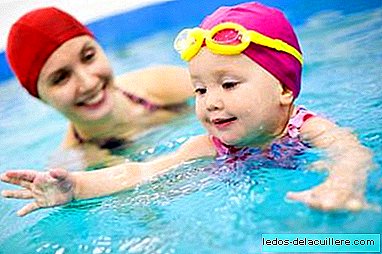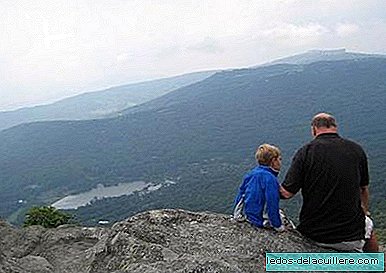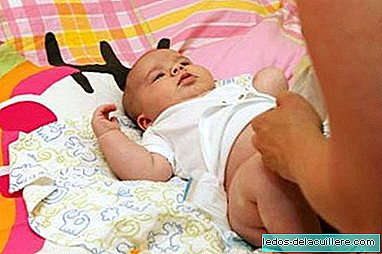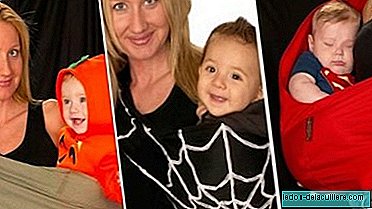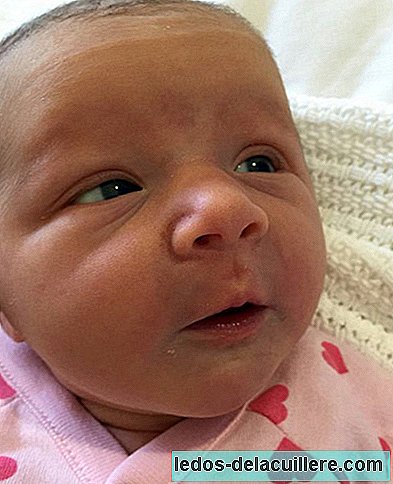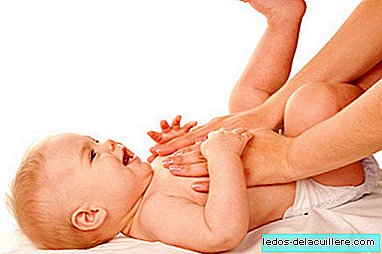
Usually, when we talk about physiotherapy, we think of a therapeutic method to treat injuries or alleviate problems related to the musculoskeletal system, such as after a sports injury or muscle contracture.
But the job of a physiotherapist is much broader, and covers various specialties related to neurology, pediatrics, cardiology or respiratory system, among others.
From the hand of Raúl Rebollo, physiotherapist and director of the Leioa Physical-Medical Center, today we are going to talk about the respiratory physiotherapy applied to children: what benefits it brings and in which cases it would be recommended.
What is respiratory physiotherapy?
Respiratory physiotherapy is a specialty of physiotherapy dedicated to the prevention, treatment and stabilization of dysfunctions or alterations of the respiratory system. For this, the physiotherapist must work with the muscles involved, in order to improve the ventilation of the patient.
Raúl Rebollo explains that respiratory physiotherapy should not, under any circumstances, replace medical treatment, but complement it to make it more effective. In the case of infants and young children, this type of treatment will help control respiratory conditions, eliminating secretions that accumulate from the nose to the deepest areas of the lungs.
"Respiratory physiotherapy treatments can help reduce mucus and cough, positively impacting the child's quality of life, improving his diet and rest," says the expert.Applications of respiratory physiotherapy

Before doing a physiotherapy treatment with our baby, it is essential to consult with the pediatrician, because there may be certain circumstances that contraindicate at any given time, or diseases for which this type of treatment is not recommended.
In this regard, these would be the main applications of respiratory physiotherapy in children, and the aspects that should be taken into account in the management of each of these diseases:
- Bacterial bronchitis
As published by the AEP, and according to the recommendations of the British Thoracic Society, respiratory physiotherapy could be beneficial in the management of this disease, although for the moment there have been no studies that support this indication.
- Cystic fibrosis
Cystic fibrosis is a chronic and inherited lung disease, which causes an accumulation of thick, sticky mucus in the lungs, digestive tract and other areas of the body. In these cases, respiratory physiotherapy would be applied as an essential part of a multidisciplinary treatment for the care of the disease.
"In the Cystic Fibrosis Treaty, published in 2012 with the endorsement of the Spanish Society of Cystic Fibrosis, the Spanish Society of Pediatric Pulmonology and the Spanish Society of Pediatric Gastroenterology, Hepatology and Nutrition, physiotherapy is contemplated as usual treatment in clinical guidelines and within the European consensus, its primary function being the elimination of secretions and there are various treatment techniques "- emphasizes Raúl Rebollo.
 In Babies and more, what is the heel test for the baby?
In Babies and more, what is the heel test for the baby?- Ciliary dyskinesia or ciliary immobility syndrome
This disease is caused by a structural defect of the hair cells present in the respiratory and gonadal tissues. For these cases, the AEP recommends respiratory physiotherapy as part of the treatment, in order to keep the airway free of secretions to decrease lung infections.
- Asthma
According to the Spanish Society of Pediatric Pneumology, respiratory physiotherapy could help the asthmatic child to take control of his breathing, and regulate the frequency and depth of respiratory movements.
Raúl explains how physiotherapy can help in these cases:
"The objectives of RF for a patient diagnosed with asthma would be, among others, the reduction of asthma-related symptoms, improvement of quality of life, decrease in the taking of relief medication and even improvement of some parameters of lung function, such as forced expiration volume in the first second, peak expiratory flow or carbon dioxide at the end of expiration. "
Precautions to be taken into account
However, there are certain diseases in which respiratory physiotherapy treatments would not be recommended, because they could be harmful to the child. Such is the case, for example, of bronchiolitis during the acute phase of the disease, and of pneumonia.
 In Babies and more Bronchiolitis: the disease that is the most frequent cause of admission in children under two years old
In Babies and more Bronchiolitis: the disease that is the most frequent cause of admission in children under two years old"The AEP does not advise respiratory physiotherapy in the acute phase of the disease, because according to a review of studies published in Cochrane, it could be harmful. So, the only respiratory physiotherapy treatment we perform in this case are nasal washes, which are recommended and are very beneficial to help the baby to eliminate mucus and help him breathe better "- explains Raúl.
"As for pneumonia, respiratory physiotherapy maneuvers would not be beneficial or recommended, according to the AEP, although in the specific case of pneumonia acquired in the hospital it could help"
In addition to these contraindications, Raúl explains that there are others particular situations that we must take into account At the time of performing a respiratory physiotherapy treatment to our baby:
Come two hours after the last meal
Do not treat the child if he is going through a feverish process
If the child is taking an antibiotic, wait for the last days of treatment.
How are these types of physiotherapy treatments performed?
As Raúl explains, the respiratory physiotherapy techniques used are not painful and pretend to be as invasive as possible, although that doesn't stop many babies from crying during the session.
"The treatments consist in the realization of correct nasal washes and manual pressures on the child's chest, accompanying him in breathing" - sums up the expert.
In summary, respiratory physiotherapy is an excellent way to help babies and children improve the symptoms of certain respiratory diseases. But remember that treatments should always be applied by an expert physiotherapist, and be a complement to medical treatment. Therefore, it is essential to consult with the pediatrician beforehand.
Photos | iStock
Acknowledgments | Raúl Rebollo - Leioa Physical-Medical Center


